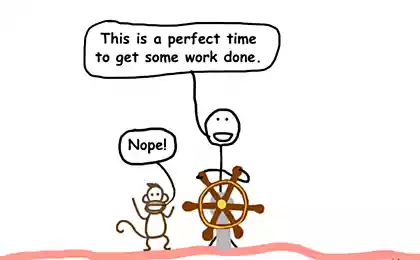160
16 Reminders to Make Goals Realistic
In order not to pursue unattainable goals, take note of these reminders – they will help you strive for the realistic and achieve more.

Every January, millions of people around the world set ambitious goals. Statistics show that only 8% of them actually achieve their goals by the end of the year. Why is this happening? The problem is not a lack of motivation, but an inability to correctly formulate realistic goals.
In his theory of goal setting, psychologist Edwin Locke proved that specific and achievable goals increase productivity by 25% compared to vague intentions. The secret to success lies in the balance between ambition and reality.
92%
People fail to achieve their New Year’s goals due to incorrect setting
The psychology of goal-setting: why we overestimate our abilities
Neuroscientist Daniel Kahneman has identified the phenomenon of planning error, a tendency to underestimate the time and resources needed to complete tasks. Our brains are evolutionarily optimistic, which helps us survive, but prevents us from realistically planning for the future.
It's important to understand: Realistic goals do not mean simplicity. It is about considering your current capabilities, resources and circumstances when planning your path to success.

16 Reminders for Realistic Goal Setting
1st
Start by auditing the current situation
Be honest about your resources: time, money, skills, energy. Most failures are due to overestimation of available resources.
2.
Apply the 25% rule
Add 25% to the originally scheduled time. This compensates for the planning error and creates a buffer zone.
3
Break it into micro-targets.
Each big goal should consist of micro-goals, achievable in 1-2 weeks. It supports motivation and gives you a sense of progress.
4.
Use the SMART+ principle
To the classic SMART criteria, add the letter R – Realistic. The goal should not only be concrete and measurable, but also realistically achievable.
5
Consider life cycles.
Recognize that you have periods of high and low productivity. Plan complex tasks at peaks of energy.
6
Create a system, not rely on motivation
Motivation is a variable. Create structures and habits that work regardless of your mood.
A Success Story: The Jerry Seinfeld Method
The famous comedian used a simple system: every day he wrote one joke and marked it on the calendar with a cross. His goal was not to "become a great comedian," but to "not break the chain." This approach led him to world fame.
7
Practice a preliminary retrospective
Imagine that a year has passed and you have not reached your goal. What obstacles could have prevented? Think in advance of a strategy to overcome them.
8.
Limit the number of goals
Psychologists recommend working with a maximum of 3 goals at the same time. More means diffusing attention and reducing efficiency.
9.
Measure incoming actions, not results
Instead of “losing 10 kg,” set a goal of “doing sports 4 times a week.” You control actions, but not always results.
10.
Learn from the mistakes of others
Learn the stories of people who have achieved similar goals. What obstacles did they encounter? How long did it take?

Success is not the final point, but the process of constantly moving forward in small but consistent steps. Every day you do something for your purpose, you win.
11.
Plan for failure.
Create an action plan in case of failure. When you know how to get back on track quickly, temporary setbacks won't ruin all progress.
12.
Use the principle of minimal progress
On bad days, do at least 1% of what is planned. This supports the habit and the psychological sense of moving forward.
13
Create a reward system
Celebrate intermediate achievements. The brain needs dopamine surges to maintain motivation over a long distance.
14.
Regularly review objectives
Review progress every 3 months and adjust your plans. Life is changing and goals need to stay relevant.
15.
Surround yourself with support
Find people with similar goals or a mentor. Social support increases the likelihood of success by 65%.
16
Remember your "why"
In moments of doubt, return to deep motivation. Why is this goal important to you? What problem is she solving?
Practical Application: From Theory to Action
Knowing the principles is only the first step. The main thing is to start applying them in practice. Research shows that people who write down their goals achieve them 42% of the time, while those who just think about them only 23%.
Start right now: Choose a goal that is important to you. Apply the first five reminders from the list. Within a week, you will notice a difference in clarity and confidence in achievement.
Realism does not mean giving up your dreams. It means building a bridge between dream and reality. Every great success began with one small but well-planned step.
Glossary of terms
Planning error is a cognitive bias in which people underestimate the time it takes to complete tasks, even knowing about past planning failures.
SMART is an abbreviation for goal setting: Specific (specific), Measurable (measurable), Achievable (attainable), Relevant (relevant), Time-bound (time-limited).
Micro-goals are small, easily attainable tasks that lead to a larger goal. Usually performed in 1-2 weeks.
A preliminary retrospective is a planning technique that presents a future failure scenario to identify potential problems and develop strategies to prevent them.
Dopamine surges are a short-term increase in dopamine levels in the brain associated with receiving a reward or achieving a goal, which increases the motivation to repeat the action.
A buffer zone is the extra time or resources put into a plan to compensate for unforeseen circumstances or underestimate the complexity of tasks.























